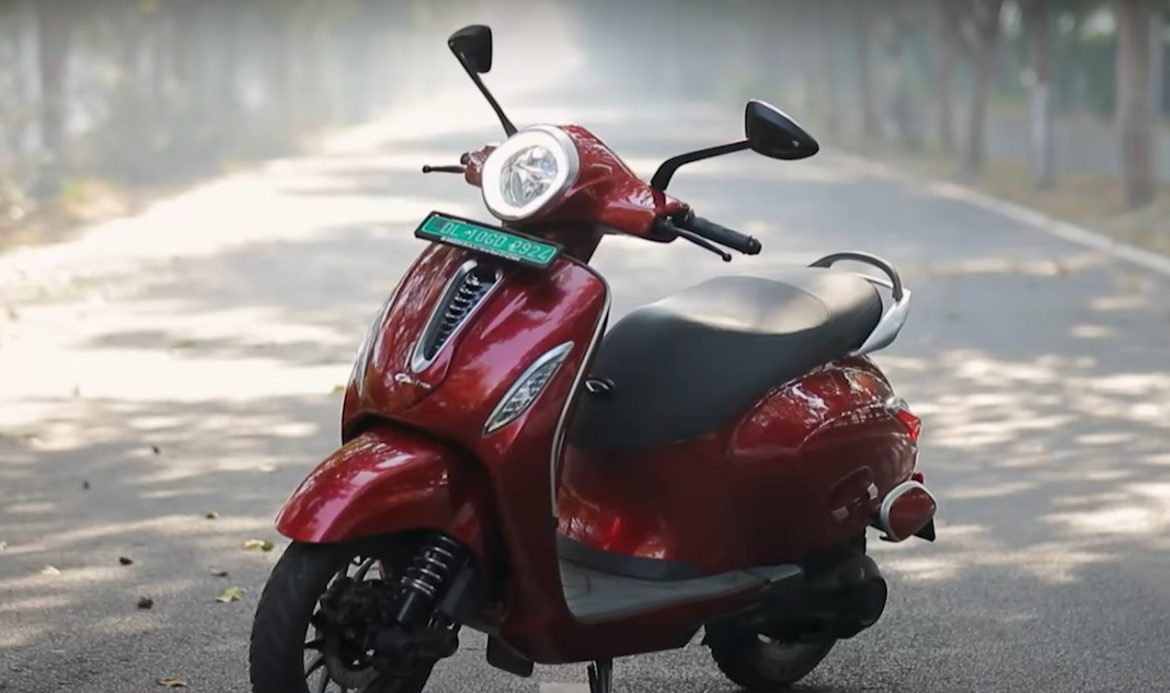DELHI: Bajaj is one of the first legacy two-wheeler manufacturers to enter the electric space. It started about three years back by reviving its popular brand Chetak as an electric scooter. And that’s where the story is largely stuck – we neither see any other new product nor even a facelifted version.
You must be thinking, why has the Chetak been brought back from the ashes after three years? It’s because this similar-looking Chetak is, actually, a re-engineered version. While other EV makers were busy advancing their EV powertrains and adding more features into the mix, Bajaj focused mainly on localising its Chetak EV.
The 2020 model-year Bajaj Chetak had powertrain parts that were mostly imported and assembled locally. The new Chetak, on the other hand, has a new powertrain, designed and developed in-house by Bajaj.
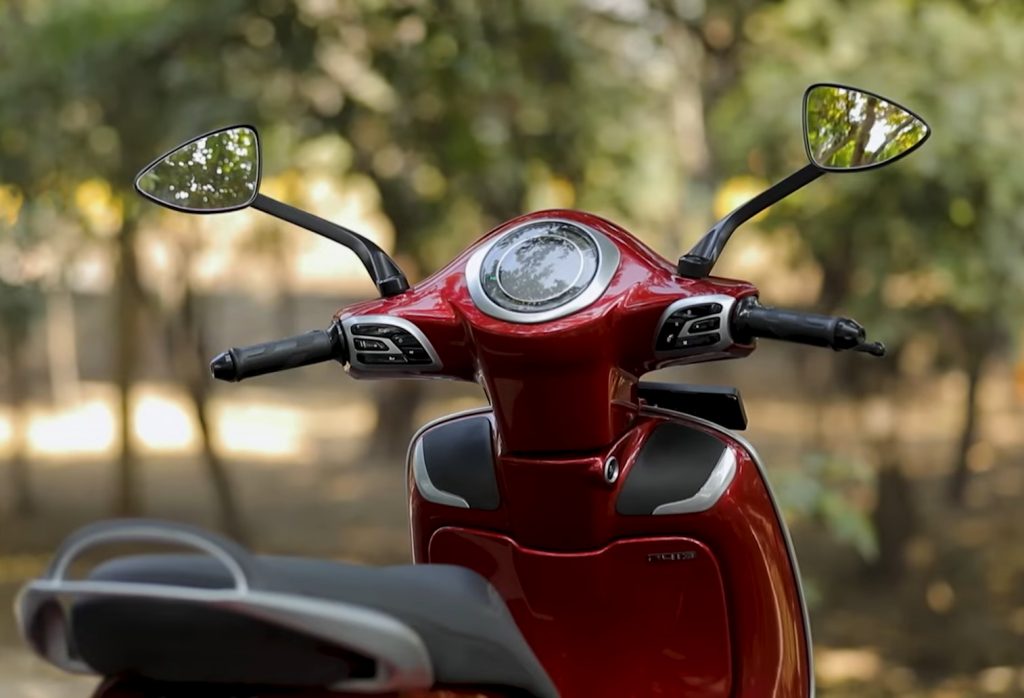
But ironically, it still remains one of the most expensive electric scooters on sale at around 150 thousand Indian rupees. So, can engineering solely be Chetak’s ticket to FAME, especially when surrounded by many competent rivals? Only a good amount of time with the scooter would’ve given us clarity on that front. We did exactly that – rode it for a couple of weeks to really get under the skin of the product.
When launched in 2020, the Bajaj Chetak was conservatively engineered, focusing on getting the basics right instead of opting for heady performance or stratospheric range or space-age features. And it still remains the same.
So much so that the appearance is the same as the old one, except for a small badge change of its product code from 2403 to 2413. But being almost exactly the same in the way it looks is not a bad thing at all, because it remains one of the best-dressed EVs even today.
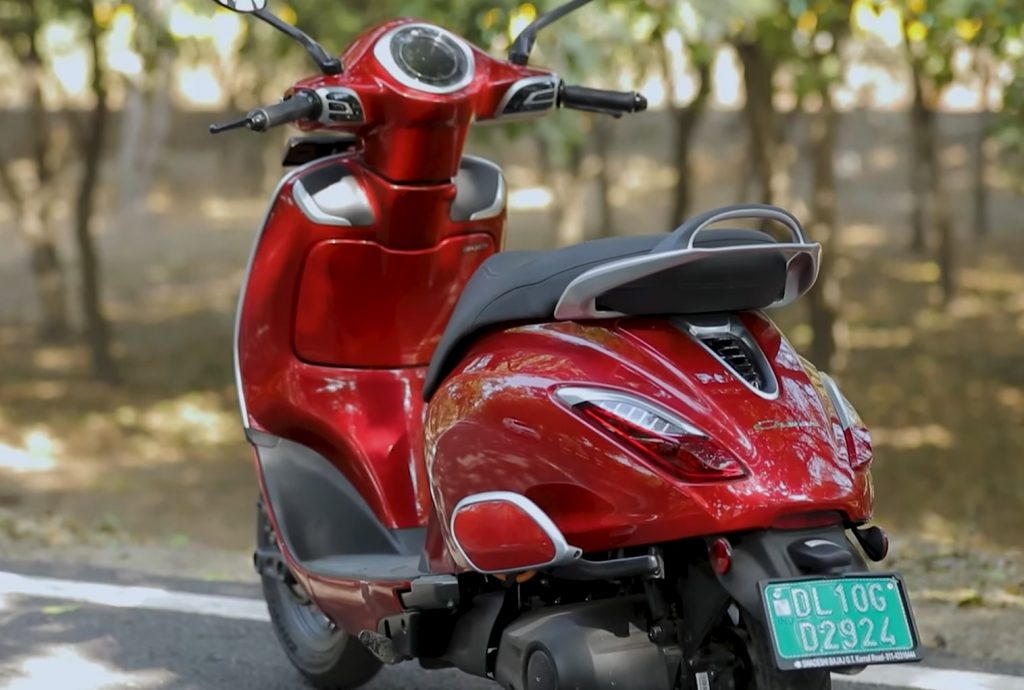
Its swooping panels based on a neo-retro theme look well-proportioned. Even more impressive is the quality – the fit and finish is high grade. And the paint job is decent too.
There are a few obliques – like the unconventionally placed turn indicators: one on each side of the switchgear. But it is just a matter of time before you will start liking them.
The keyless start-stop system is quite intuitive. You can simply unlock it with the press of a button, put it in the drive mode and start riding while keeping the key fob in your pocket. The feature works seamlessly, and the button on the key also helps you find your scooter in congested parking spaces. The round LCD instrument console goes well with its styling, but the Chetak misses out on features like a colour TFT screen and navigation. The negative LCD also looks a bit cluttered with information and is difficult to read under harsh sunlight.
It also gets a glove box storage along with the under-seat storage area, and both get an electrically releasing lock feature. The front storage is designed to carry its charger, a toolbox and a first aid kit, and there is a little space for a smartphone with a USB charging port. That means you get clean under-seat storage to use. The flat floorboard and retractable hook on the front seat aid convenience.
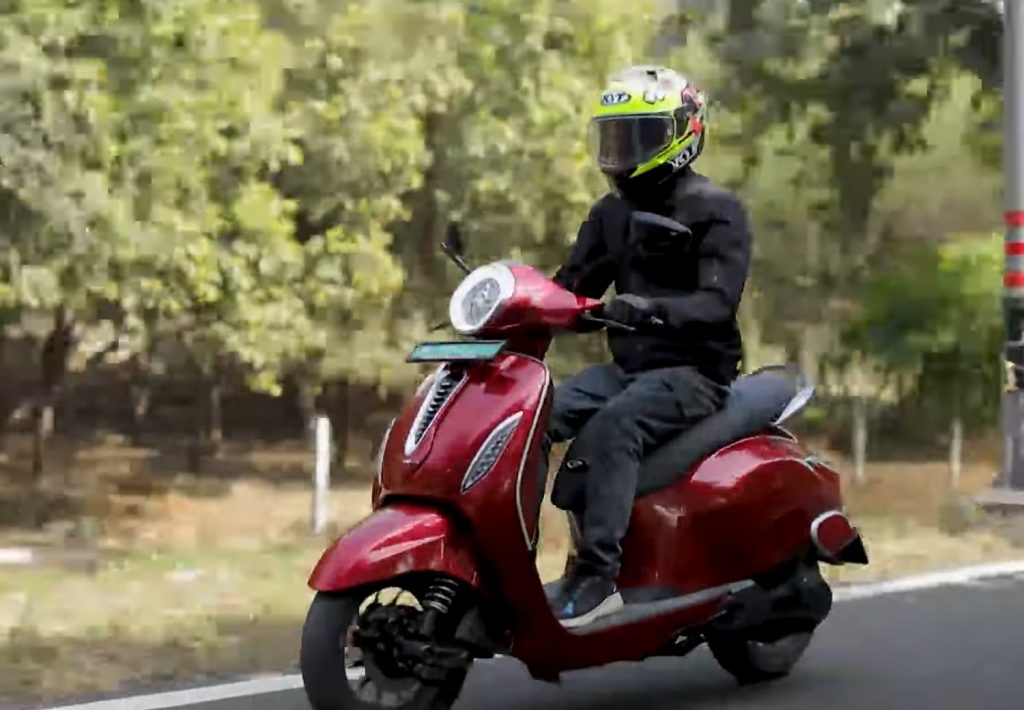
The Chetak isn’t tuned for outright performance, but rather for city riding. The motor feels lively up to 50 km/h but performance tapers off after that. Even the top speed, at 65 km/h, is not up in the league of its rivals.
That makes the Chetak unsuited for highway rides, and the same reflects in the range figures as well. Continuous riding in the Sport mode brings down the range of Chetak from the claimed 90 to around 70 kilometres.
Another reason is its charging time which is about four hours. That’s the Achilies’ heel in our view. Making a good PR stunt around the massive recharge time when competitors are going to town talking about fast charging and swappable batteries is, let’s be straight, very challenging.
In the city though, it offers a seamless ride experience, especially the way it automatically transitions between its Eco and Sport modes depending on throttle position. So, if you need more performance, simply twist the throttle and the modes change automatically.
It does moderately well in the city environment and can even exceed the claimed figures and you can completely expect it to run at least 80 kilometres if you’re not aggressive on the throttle. The range is taken care of by its impressive battery regeneration tech as well, which works seamlessly and is quite efficient.
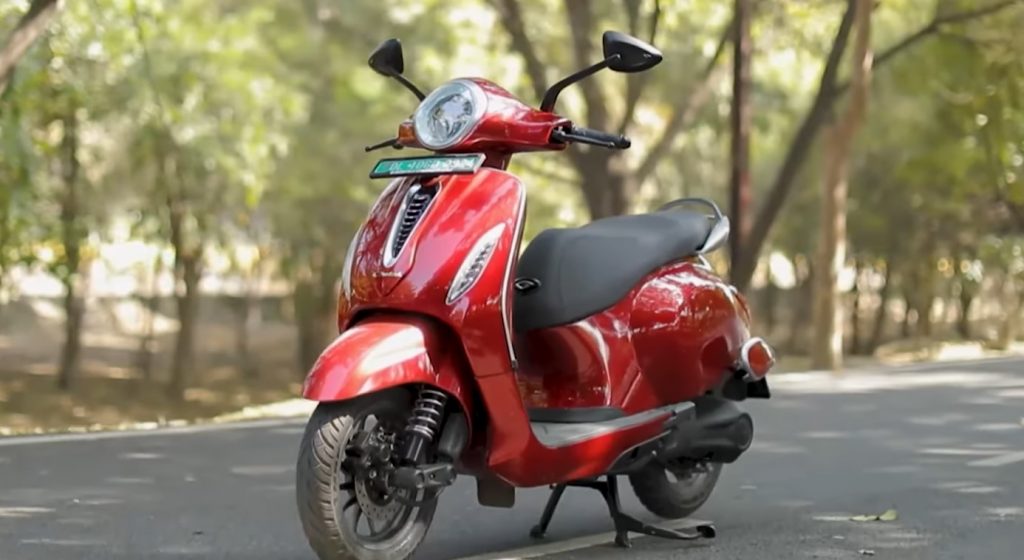
The Chetak feels planted on the road. The unique cantilever front and rear monoshock suspension absorb road imperfections well at low speeds and insulate the rider from sharp-edged potholes and such road surface irregularities. The braking performance has some scope for improvement, and we feel the main issue is its skinny 12-inch tyres.
The Bajaj Chetak is a remarkably engineered product, but today’s EV trends point to cutting-edge features and better performance and range. These are the areas where Bajaj needs to focus and build on to make the Chetak a more wholesome package. But even if we were to forgive it for its engineering and recharge bottlenecks, one can’t escape its 150 thousand rupees asking price – it’s high any way you look at it, and that alone can be the biggest deal breaker.

